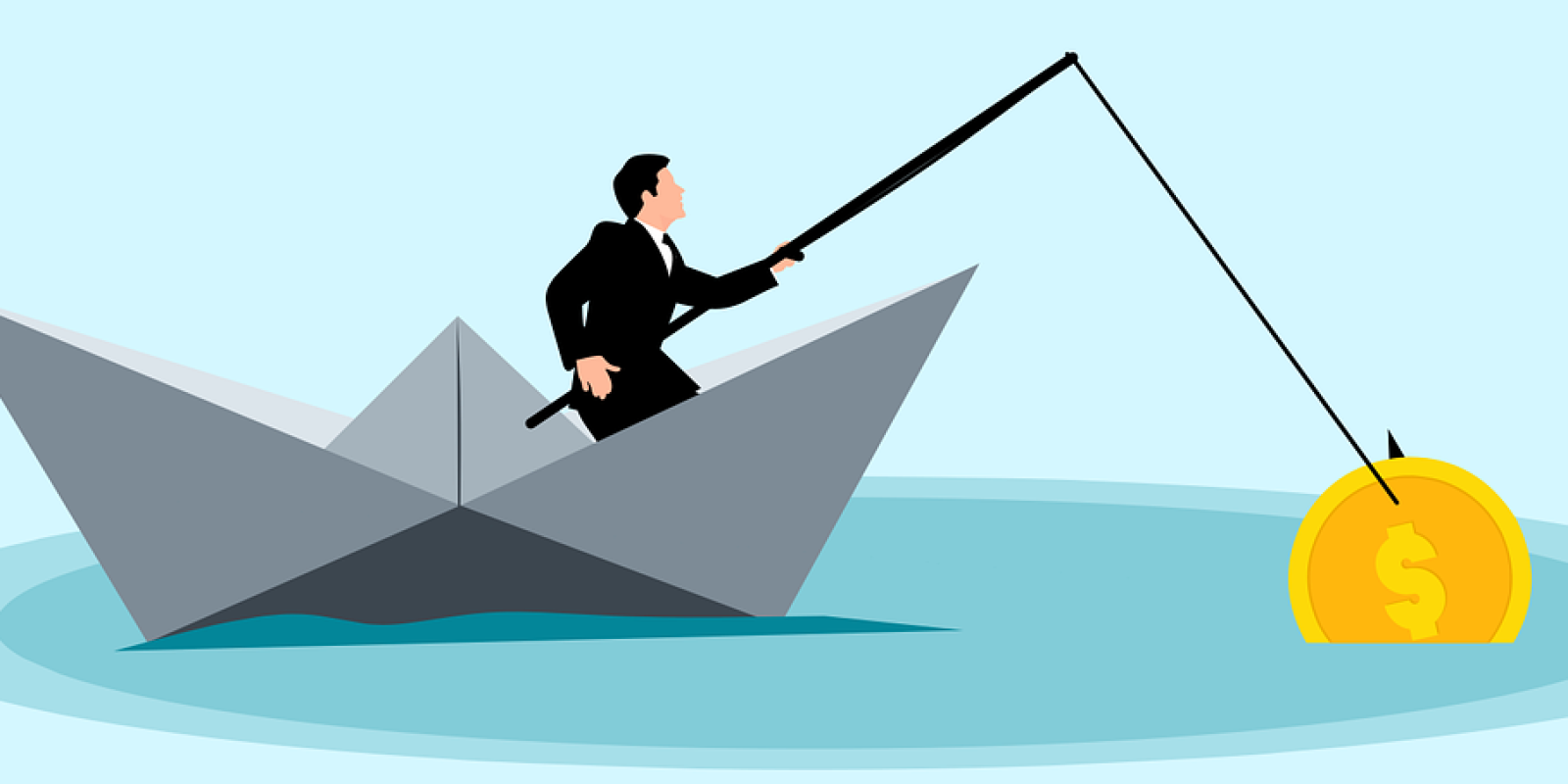The history of crowdfunding as we know it today is relatively recent, but the phenomenon has roots farther back than one might imagine. Tracing its history is useful to dispel the impression that this capital-raising tool emerged out of nowhere like one of the many contemporary trends that quickly become the talk of the town without a clear understanding of how and why.
Crowdfunding emerges in our time as a means of raising funds for charitable projects, bringing to this area the novelty of online collection rather than in physical locations or door-to-door. The earliest examples thus date back to the 1990s, when the Internet and computers were very slowly beginning to spread.
But the history of crowdfunding as a concept and as a mechanism begins much earlier, with rudimentary forms spanning the centuries and showing that humans had long since theorized the simple idea behind it.
Crowdfunding origins
At the heart of crowdfunding is an idea that is even mundane in its simplicity and sounds somewhat romantic in its popular formulation: unity is strength. A concept that, when applied to the economic sphere, translates into dividing an economic effort among several people, which has the advantage of both increasing the resources available and distributing the risk and thus reducing it for each participant.
This need first manifested itself in the most everyday areas of human life, then in the economic sphere when our society became markedly mercantile.
In the early seventeenth century, Amsterdam was a trading center of international significance, from where countless expeditions departed in search of the varied treasures the world had just begun to reveal it possessed. When the state coffers tightened, explorers and traders decided to raise their own funds to carry out the - risky - expeditions. Each covered a portion of the costs, even people outside the circle promoting the venture could participate, and eventually the proceeds would be divided proportionally to the dues paid. Since these were very time-consuming ventures, if someone changed his mind in the meantime or needed his own money, he could resell his participation in the project to third parties.
It was the dawn of the birth of what was to be the first stock exchange, to be based right on Dam Square in the Dutch capital. But while over the centuries the dynamics of the Exchange would move further and further away from the simplicity of the sharing mechanisms open to all from which it originated, crowdfunding carried them forward and developed them consistently.
The web has made it much easier and more effective to implement this mechanism in an accessible and immediate tool, but in the past there were those who had other means to make their voices heard by the crowd and implement those rudimentary forms of crowdfunding we have mentioned.
Want to learn more directly with our crowdfunding experts about the topic you are reading about?
Turbo Crowd can reveal to you all the tricks of the crowdfunding trade, explain the capital-raising opportunities available to you, and provide you with practical support to carry out a successful crowdfunding campaign.
Crowdfunding examples throughout history
Not only are there examples of crowdfunding in history well before the 1990s, but there are of different types of crowdfunding.
The easiest to implement historically is donation crowdfunding because it doesn't require structuring forms of remuneration. An almost primordial example is Pope Urban II's appeal to the community of believers to contribute to financing the Crusades in the Holy Land in 1095, in the name of faith. The key here is the shared ethical-moral ideal driving donation crowdfunding.
A more familiar example is that of the New York World newspaper editor, Joseph Pulitzer, who in 1884 turned to citizens through his pages to raise funds for the restoration of the Statue of Liberty. Over 125,000 people contributed over $100,000 in total—now, if that's not crowdfunding!
The first to launch a reward crowdfunding campaign, on the other hand, was poet-vate Alexander Pope, who through his own fame in 1713 was able to raise the funding to produce the monumental translation of the Iliad, promising supporters an advance copy of the volume and their name among the acknowledgments.
Something similar was to be done at the end of that same century by Mozart, who after abandoning the protection of the Archbishop of Salzburg financed three of his own concerts by promising the financiers an autographed and dedicated copy of the manuscript of those concerts.
Finally, the pioneer of lending crowdfunding was Jonathan Swift, the author of Gulliver's Travels, who in the same years used the model of lending between private individuals not for himself or his own works, but for charitable purposes: he established the Irish Loan Funds, collective institutions through which small loans could be made to families in economic difficulty, with repayment in installments and modest interest.
In all these examples, however, the key element is "who had means to make their voice heard by the crowd," where the means is fame, a newspaper, authority. What has enabled the widespread spread of crowdfunding and the development, in particular, of equity crowdfunding, is the quintessential revolutionary and democratic tool of the last century: the Internet.
The steps of contemporary crowdfunding
As we anticipated at the beginning of this article, crowdfunding as we know it today began to develop in the 1990s.
- 1997: We commonly place the birth of online crowdfunding in the year that the British band Marillion starts an online fundraiser by appealing to fans to support the expenses of their North American tour, which was in danger of having to be canceled. It is a success, with about $60,000 raised. Success that the band will repeat a few years later to finance the recording of a new album, carrying out the first online reward crowdfunding campaign.
- 2001: Inspired by this endeavor, music producer Brian Camelio founded Artistshare, which can be considered the first online crowdfunding platform, dedicated specifically to musicians.
- 2006: According to many sources, the invention of the term "crowdfunding" itself with the meaning it has today dates back to the launch of the Fundavlog portal, dedicated to funding videoblogs, by Michael Sullivan.
- 2007: Barack Obama launches a crowdfunding campaign to finance his election campaign, on a platform specifically created for this purpose that still exists today.
- 2008-2009: the two true mothers of crowdfunding platforms, Indiegogo and Kickstarter, are born, the first to have vast and lasting success and to establish a model of "democratic" fundraising destined to be replicated worldwide.
History of crowdfunding in Italy
It is only since the U.S. success that the crowdfunding phenomenon has taken hold in Italy as well, but there have actually been some early and lasting demonstrations, although they did not initially have a large following.
We are talking about Produzioni dal Basso, a platform born in 2005, thus even before the great American models, and still active today. Our country, however, was held back by high digital illiteracy, poor diffusion of online payments, distrust of the Internet and bureaucratic fetters.
For this reason, only since 2010 did reward, donation and lending crowdfunding platforms begin to appear in a systematic way in Italy as well. In the following years, equity crowdfunding also took its first steps, whose potential proved such that it required ad hoc regulation, introduced in 2013 by Consob. Since then, growth has been unstoppable and has been accompanied by continued specialization and diversification of the instrument. The expansion of equity crowdfunding to all SMEs has increasingly made it a pivotal element in supporting the Italian real economy.
The European Crowdfunding Regulation, approved in 2020 and in force from November 2023, marks a new milestone in the history of crowdfunding, intertwining the fates of the phenomenon in different European countries and opening a new chapter all to be written.
Turbo Crowd has been looking at the European horizon for some time, sensing its enormous potential for crowdfunding and Italian businesses. To receive all updates on news and opportunities in the crowdfunding world, sign up for the our Facebook group and to the our newsletter.
Do you need support in preparing a successful crowdfunding campaign and seeking potential investors for your project?
Turbo Crowd can accompany you throughout the process, from organizing the precrowd to closing the collection, developing effective and innovative marketing strategies to best promote your campaign.













































